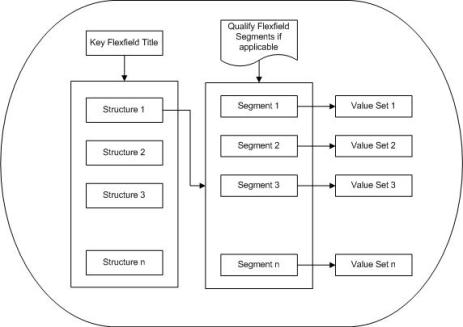Accounting Flexfield is a Key Flexfield which is created to define your Chart Of Accounts (COA). A chart of accounts is a list of accounts used by a business to classify financial transactions. A good chart of accounts provides flexibility for recording and reporting accounting information, provides structure for managing business uniformly, and enhances communication across all parts of the business.
5 things that should be considered for taking a decision for the Chart of Account’s segments are:
i. One type of information: The first of these considerations is a crucial aspect of designing a long-lived chart of accounts which means that you should have one (and only one) type of information in each segment. If the type of information in a segment is not unique, the chart suffers from a vulnerable overlapping of information across segments, creating potential inaccuracies during reporting. For example to avoid the duplication of data single segment named Cost Center can be created for department and/or location segment.
ii. Information not repeated: For reasons similar to those discussed above, your accounting flexfield should not repeat information that exists in other modules of EBS.
iii. Enough room to expand: A common downfall of chart of accounts design is to tailor the design to your current business without considering the future growth and change that are inevitable outcomes of a successful company. In the design phase, make sure to define your segment lengths to be long enough to accommodate values that will be added in the future. Failure to do so will make a segment susceptible to filling up. When designing roll-up group values, a general guideline is to increment consecutive values by at least 5 to 10 within each group.
iv. Use logical ranges: Expanding on what was just discussed about segment lengths, you should take care to put values for each segment into logical ranges. If you know the trends in your business, you can define an appropriate number of characters for both a segment and the ranges it contains. Don’t hesitate to increase the length of a segment to accommodate a larger range. Increasing segment length to accommodate growth lets you build flexibility into the COA structure. Ranging your values logically promotes streamlined reporting, security and maintenance. This is recommended to avoid using alpha characters because these will create problems in sequencing and sorting data in reports, assigning codes, using ranges, and when creating rules.
v. No reliance on spreadsheets: Spreadsheets are great tools for short, small projects, but care should be taken when using them as an extensive resource Spreadsheets are good choices when you need to organize simple data in a fast and cost-effective manner, but they are generally ill-equipped to handle accurately and efficiently transforming data from your financial systems to report results. Eliminating your reliance on spreadsheets to get the financial information you need is a best-practices consideration when designing your chart of accounts. Make sure that you will be able to get all of the information you need from the built-in reports of EBS. This will add value by giving you real-time access to information and eliminating numerous errors that are introduced when multiple employees use the same spreadsheets and are unaware of changes and updates made by others. You will get faster reports if you focus on the built-in reporting features of EBS.
All these five determinants should be kept in mind while taking decisions on Chart Of Accounts segments.

No comments:
Post a Comment